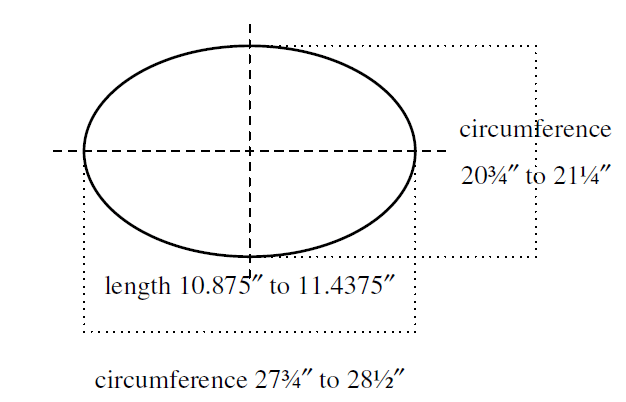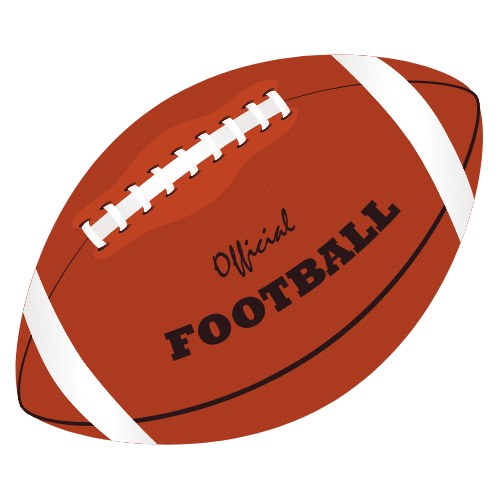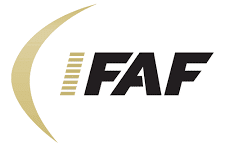Rule 1 - The Game, Field, Players and Equipment
National federations may adapt Rule 1 to meet local needs and circumstances, provided no adaption reduces the safety of the players or other participants.
SECTION 3. The Ball
Article 1 - Specifications
The ball shall meet the following specifications:
a. New or nearly new. (A nearly new ball is a ball that has not been altered and retains the properties and qualities of a new ball.)
b. Cover consisting of four panels of pebble-grained leather without corrugations other than seams.
c. One set of eight equally spaced lacings.
d. Natural tan colour.
e. Two 1-inch white stripes that are 3 to 3¼ inches from the end of the ball and located only on the two panels adjacent to the laces.
f. Conforms to maximum and minimum dimensions and shape indicated in the accompanying diagram. (Exception: The competition authority may authorise the use of a smaller ball for competitions involving female or junior players.)

Diagram showing the longitudinal cross section of the standard ball. Maximum and minimum dimensions are used. This diagram is printed in order to secure uniformity in manufacture.
g. Inflated to the pressure of 12½ to 13½ pounds per square inch (psi).
h. Weight of 14 to 15 ounces.
i. The ball may not be altered. This includes the use of any ball-drying or ball-warming substance. Mechanical ball-drying and ball-warming devices are not permitted near the sidelines or in the team area.
Article 2 - Administration and Enforcement
a. The game officials shall test and be sole judge of not fewer than three and not more than six balls offered for play before and during the game. The game officials may approve additional balls if warranted by conditions.
b. Game management shall provide a pressure pump and measuring device.
c. Unless provided by the competition authority, the home team shall provide a minimum of three legal balls and should notify the opponent of the ball to be used. The opponent may provide one or more legal balls in addition to those supplied by the home team if they wish to do so.
d. During the entire game, both teams shall use only balls that meet the required specifications and have been measured and tested according to rule.
e. All balls to be used must be presented to the referee for testing at least 60 minutes before the start of the game. Once the teams have presented the game balls to the referee, they remain under the general supervision of the officials throughout the game.
1. The referee’s first priority is to have three legal balls. If the competition authority or the home team does not provide at least three legal balls, the referee shall inform the away team and offer them the opportunity to provide legal balls. If fewer than
three legal balls are provided, the game will proceed with only the legal ball(s) being used. If no legal balls are provided, the referee shall select up to three balls which in his judgement are the best available.
2. When more than three legal balls are presented, the referee shall select the balls in best condition from those presented by both teams.
f. When the ball becomes dead outside the nine-yard marks/top of numbers, is unfit for play, is subject to measurement in a side zone or is inaccessible, a replacement ball shall be obtained from a ball person. (A.R. 1-3-2:I)
g. The referee or umpire shall determine the legality of each ball before it is put in play.
h. The following procedures shall be used when measuring a ball:
1. All measurements shall be made after the ball is legally inflated.
2. The long circumference shall be measured around the ends of the ball but not over the laces.
3. The long diameter shall be measured with callipers from end to end but not in the nose indentation.
Article 3 - Marking Balls
Marking a ball indicating a preference for any player or any situation is prohibited.
PENALTY − Live-ball foul. Fifteen yards from the previous spot [S27: UC-UNS].



